Introduced in the year 2010, the Instagram app was made by a team of two young people – Kevin Systrom and Mike Krieger who put it together amidst the optimism that the users would install and post spectacular moments connected with their lives.

Surprisingly, visitors engaged in, and far sooner, the app’s spectrum escalated to millions.
Within a calendar year, more than 500,000 users started joining every single week.
However history has it, something that has positive impacts comes with unfavorable elements as well, and Instagram was no exception.
It got apparent pretty soon that a block of people was going to press the app into service for evil purposes too.
As a result, the duo devoted their entire time personally deleting ugly comments and banning trolls during the early days.
However, by the moment they departed from Instagram in 2015, the platform owned more than 1 billion users, which were significantly way too many for individuals to monitor.
So, like other social networking sites trying to root out illegal content, Instagram too turned to machinery help to put a stop on all the ugly uses of the app, extending from revolutionary inculcation to child exploitation.
Cyberbullying Statistics- “According to research by Pew Research Center, 59% of American teenagers have been bullied or harassed online.”
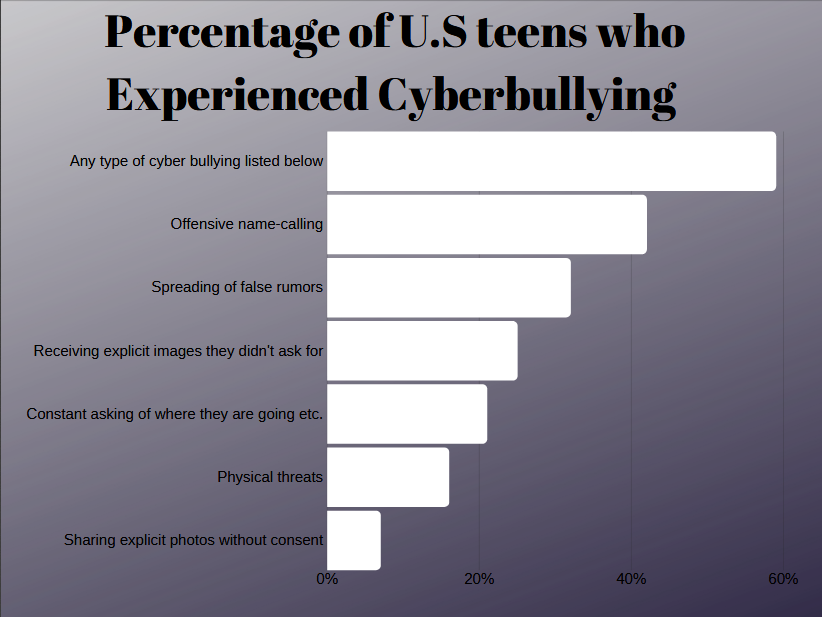
Cyberbullying Statistics- During the same analysis by Pew research center, it was observed that 66% of US teens think that their parents and teachers aren’t able to help them in addressing online harassment and online bullying.
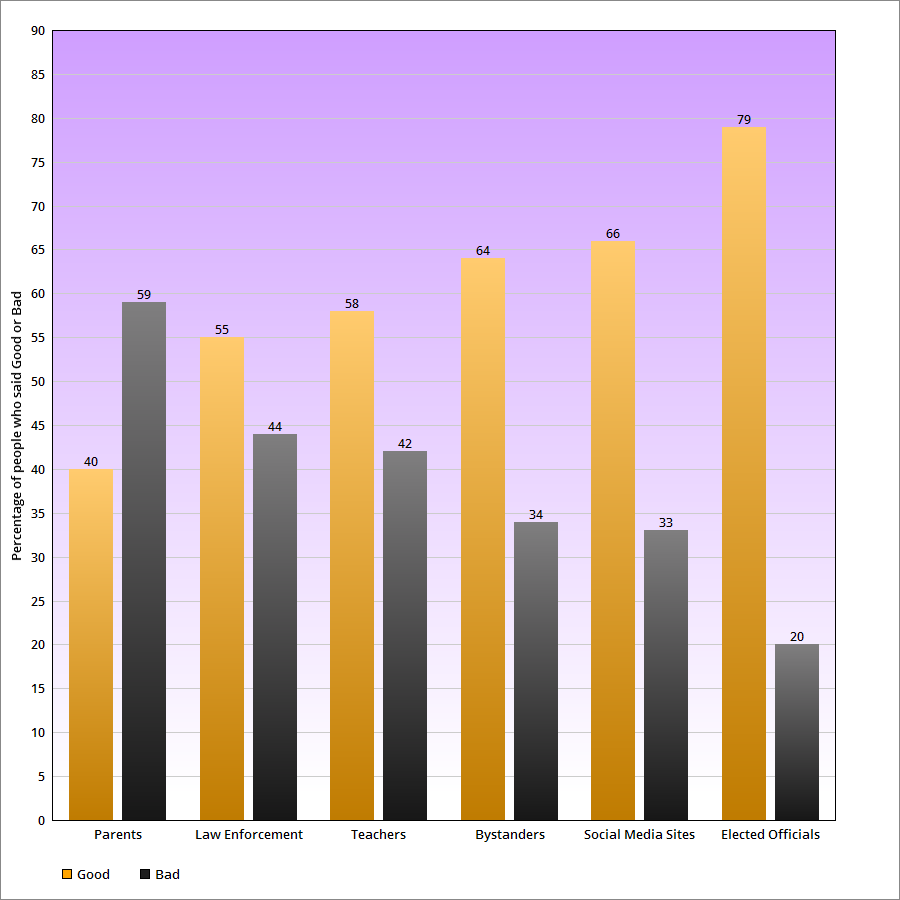
Cyberbullying Case: The photo below is the screenshot of a write-up by Times where Ethan Cohen shares his very early intimidation #bullying days.

In response to his shared thoughts, Instagram stated that it would not have taken place for sure, had it been anywhere today.
Cyberbullying Statistics- In the UK, the anti-bullying charity Ditch The Label found that 42% of British 12- to 20-year-olds had been cyberbullied on Instagram.
The stats also confirmed that 65% of people who took part in the experiment were bullied once in a while.
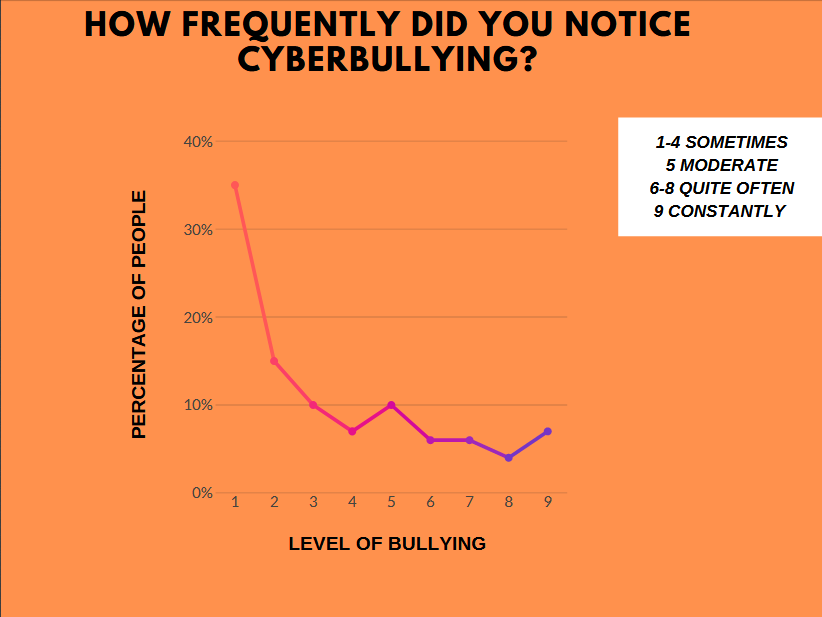
The picture below is the percentage of people selected from each region during the experiments where around 10,000 people were included in the experiments, and the results were taken into records.
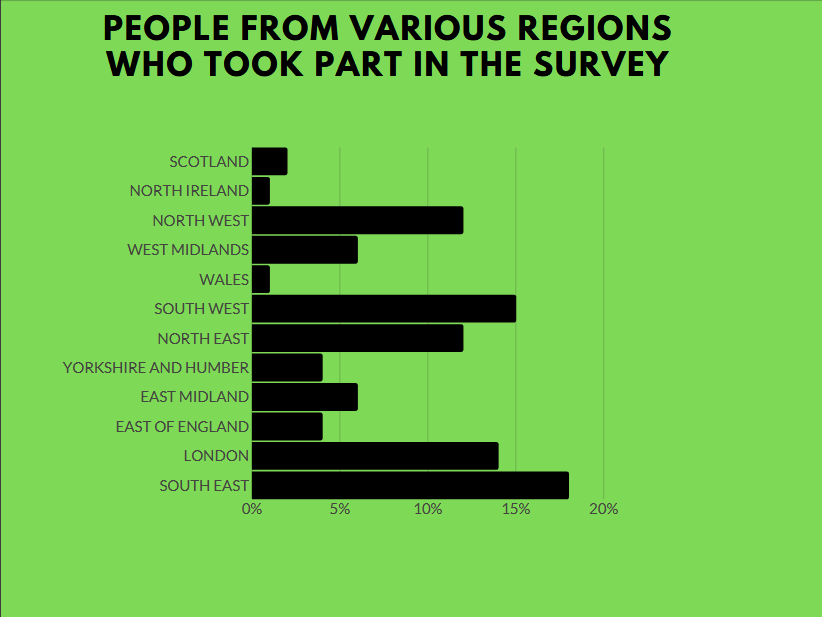
Bullying and harassment have hosted on social media since the days people even jumped on platforms.
Although Instagram has improved way better, when seen on statistics, it has a long way to go.
Cyberbullying Statistics- 71% of individuals believe that social networks don’t do much to prevent cyberbullying, which alarms Instagram about a concern to put their focus on.

By one research, almost 80% of teenagers get on Instagram, among which more than half of those users get bullied on the app (either for their looks or their preference).
Moreover, harassing on sites like Instagram has always been linked to suicidal behavior.
Therefore, the Instagram company announced brand-new content moderation plans that are going to guard individuals from the unchecked harassment (#bullying) as well as hate speech people wreak on each various other.
Cyberbullying Statistics- The graph below shows the different reason people never reported cyberbullying. Some didn’t report it due to the anxiety of it getting worse, while a few said that they were embarrassed, didn’t take seriously and much more.
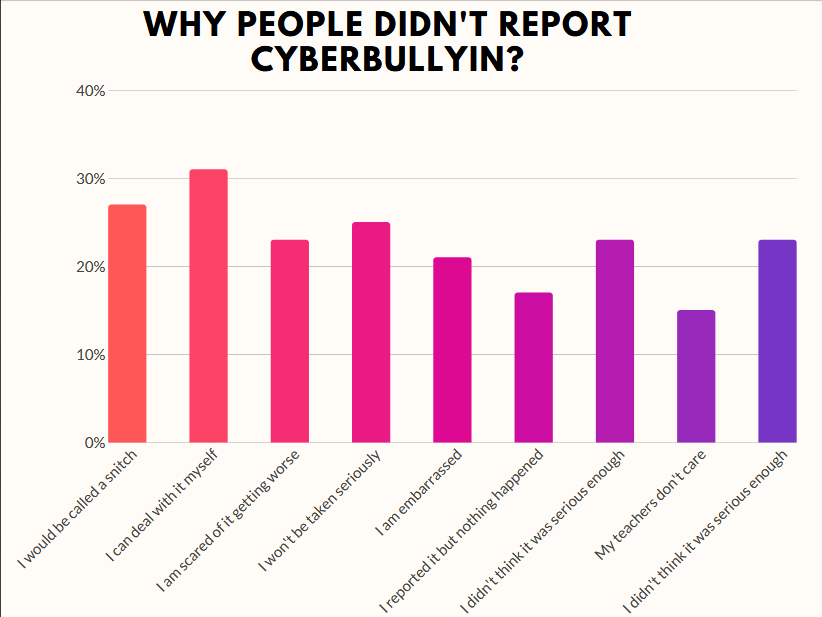
Cyberbullying Statistics- Among 78% of people that utilized the app, 40% of the people concurred that they experienced it on the platform (Instagram) which became an issue for Instagram as the percentage factor was highest compared to any other social media network application.
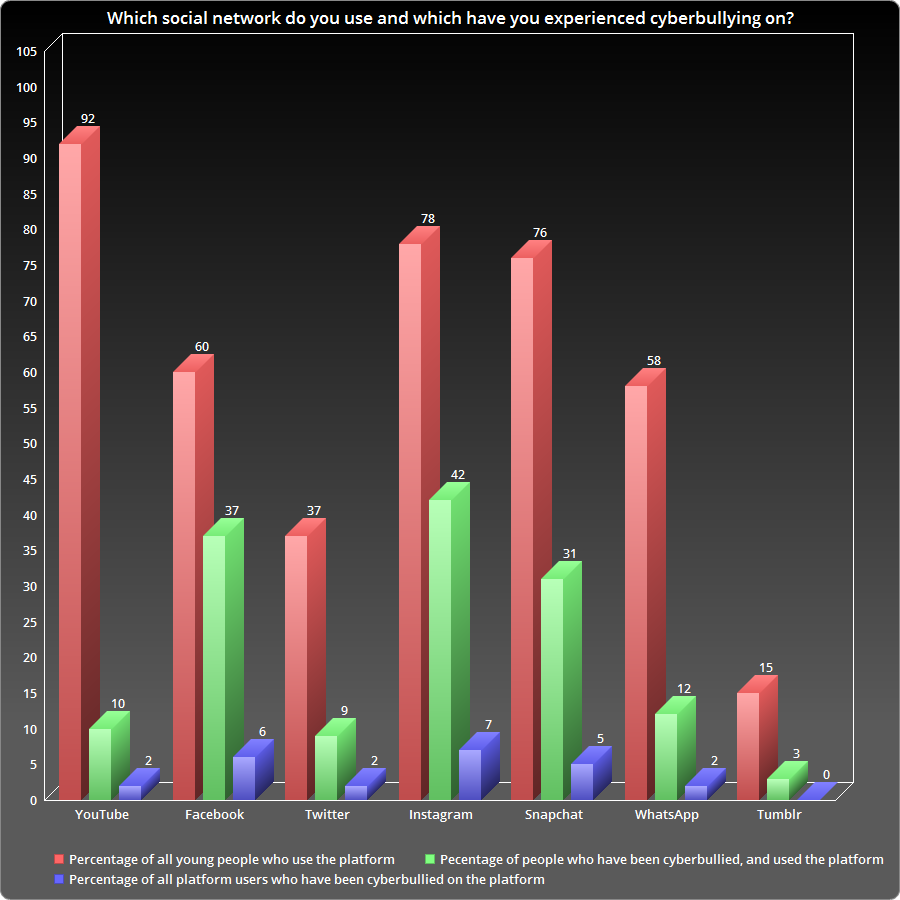
It was about time for Instagram to add additional features on the application to equip people to handle this significant concern.
Instagram team’s objective is to connect individuals with the other people, show them things they are fond of, that is only possible if users sense comfort and feel free to articulate themselves on Instagram.
The gram company realized bullying is a challenge many users face, particularly youngsters.
Hence, their team committed themselves to direct the industry in the battle against online intimidation #bullying and change the whole user experience on the platform that was taped before.
“We can do more to prevent bullying from happening on Instagram, and we can do more to empower the targets of bullying to stand up for themselves,” said Instagram’s spokesperson during a conference.
To resonate the above statement, sooner Instagram announced new tools that were coded with a deep understanding of how bullying takes on the platform, and how people respond to it.
New features were quite crucial for teens as they are the ones who experience it the most and less likely to report it.
From early tests of this feature, stats proved that it encouraged a few people to undo the comments and post something less hurtful once they have had a chance to reflect.
The gram company wanted to create a feature that allowed people to control their Instagram experience, without notifying someone who could be targeting them.
Sooner the gram team would begin testing a new mean to protect user’s account from unwanted interactions termed as Restrict.
Once users “Restrict” someone on Instagram, comments on his posts from that person are going to be only visible to that person.
Moreover, you can choose to make a restricted person’s comments visible to others by approving their comments.
Additionally, “Restricted” users won’t be able to see when you’re active on Instagram or even when you’ve read their direct messages.
Pretty cool, right?
Along with human moderators, the platform is utilizing an AI function that recognizes harassing language like “dumb,” “stupid,” “ugly” prior to a remark is posted and asks individuals-“Are you sure you want to post this?”
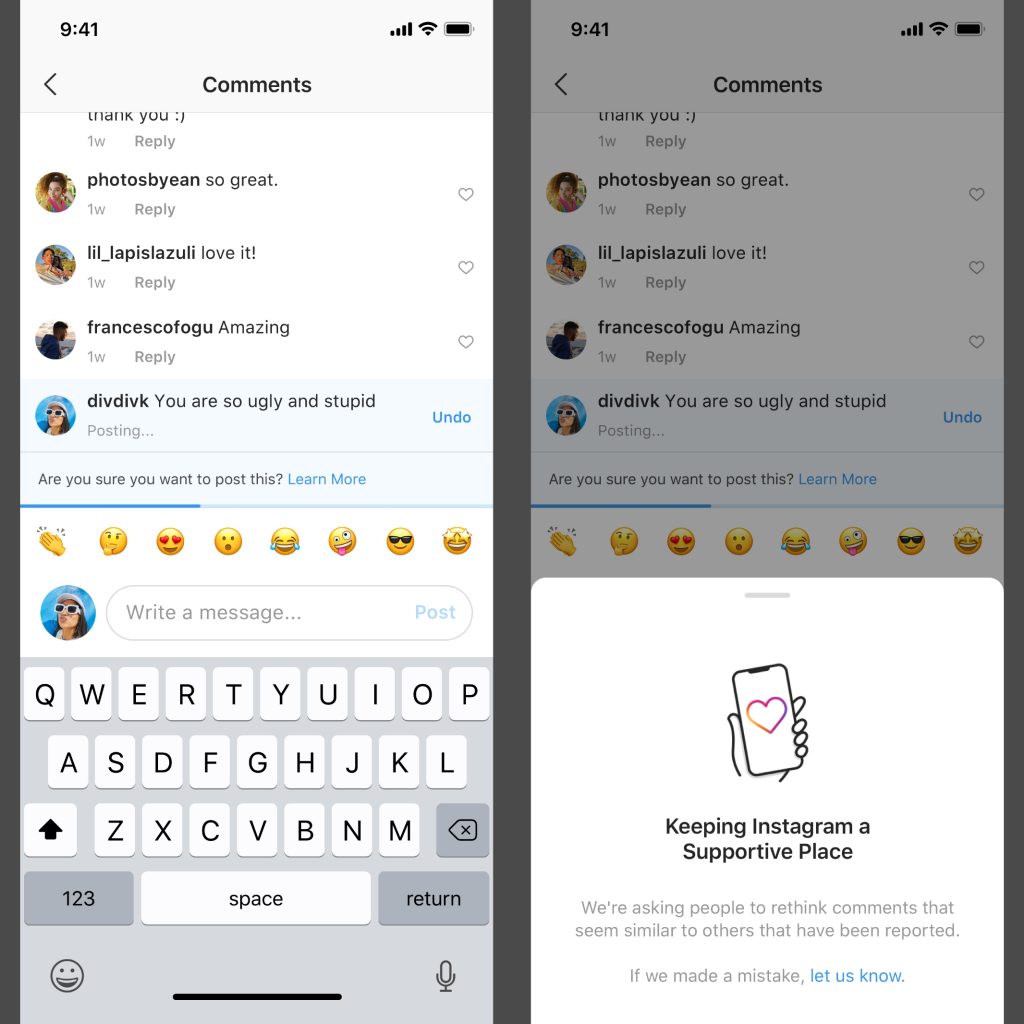
Although it does not stop people from making negative comments, it gives them the opportunity to “undo” the message before it posted.
Instagram needs to be a kinder and gentler social platform; hence the creators of Instagram firstly obtained an AI device known as DeepText from Facebook, which was created to recognize and analyze the language individuals used on the platform.
The Instagram team initially made use of the tool in 2016 to seek spam.
The following year, they trained it to locate and also block offending remarks, including racial slurs.
By mid-2018, they started utilizing it to discover intimidation #bullying comments too.
When Mosseri took control of Instagram in October 2018, the gram company revealed it wouldn’t only utilize AI to look for bullying comments; but it also would start using programmed machines to spot harassing #bullying in post photos.
The whole process starts with human moderators hunting and categorizing hundreds and thousands of pieces of content, and concluding whether they contain bullying or otherwise.
If it holds for any case, they label them and submit the samples into what is known as a Classifier.
At present, there are three different bullying classifiers that check web content on Instagram- the first focuses on assessing the text written by users, the other keeps an eye on pictures that are posted, while the third one accesses the video content.
Problem with the Execution against Cyberbullying Harassment?
“What makes cyberbullying so hard to tackle is that the definition is so different to individuals,” says Newton, Instagram’s head of public policy.
The form bullying operates on Instagram have indeed changed with time.
There is an abundance of phrases that users use, and their meaning is mentioned nowhere on the Internet.
The meaning and slangs change from places to places, person to person, or even culture to culture.
According to Instagram’s research, rude comments, insults, and threats are exceedingly prevalent throughout the online community. A portion of that is quite easy to grasp, yet there is so much uncover.
Jessa Lingel, a professor at the University of Pennsylvania who studies digital culture, points out that language isn’t automatically good or bad- “context matters,” she says.
Instagram’s text classifier, for instance, has been well-trained to hunt for strings of words like “ugly ass” and “you stupid,” and so on.
However, slang evolves with time and also across societies, particularly among youth.
In order to catch aggressive behavior, it calls for comprehending complete lines, not just a few words contained within them.
To decide what content counts as “dehumanizing” or “bullying” is complicated, and tools need to head an extra step to execute efficiently.
“People will always adapt,” says Kat Lo, a researcher and consultant who specializes in content mediation and online harassment.
The company now heavily focuses on hiring more engineers and building AI models that can target bullying behavior more precisely, but for the time being, the platform pretty much relies on content moderators.
Earlier this year in January, Facebook CEO Mark Zuckerberg told investors that Facebook was investing “billions of dollars in security.”
Adam Mosseri, the head of Facebook-owned Instagram, said the company is willing to make decisions that keep its users safe from online bullying, even if it leads to decreased usage.
The longtime Facebook employee Mosseri joined in Instagram after Instagram’s owners suddenly said goodbye to the company, supposedly amidst tensions with parent company Facebook.
Having refined his pressure management capabilities by overseeing Facebook’s News Feed, the 36-year-old Mosseri represents a new age of Instagram, referring “the comfort and safety” of gram users his top emphasis.
To that end, “comfort and safety” was only possible if the company tackled bullying; hence, Mosseri committed his engineers and designers to the cause.
His unit is consistently carrying out comprehensive research on the platform content to bring on new features and updates with bullying in consideration.
Mosseri tweet regarding this update-
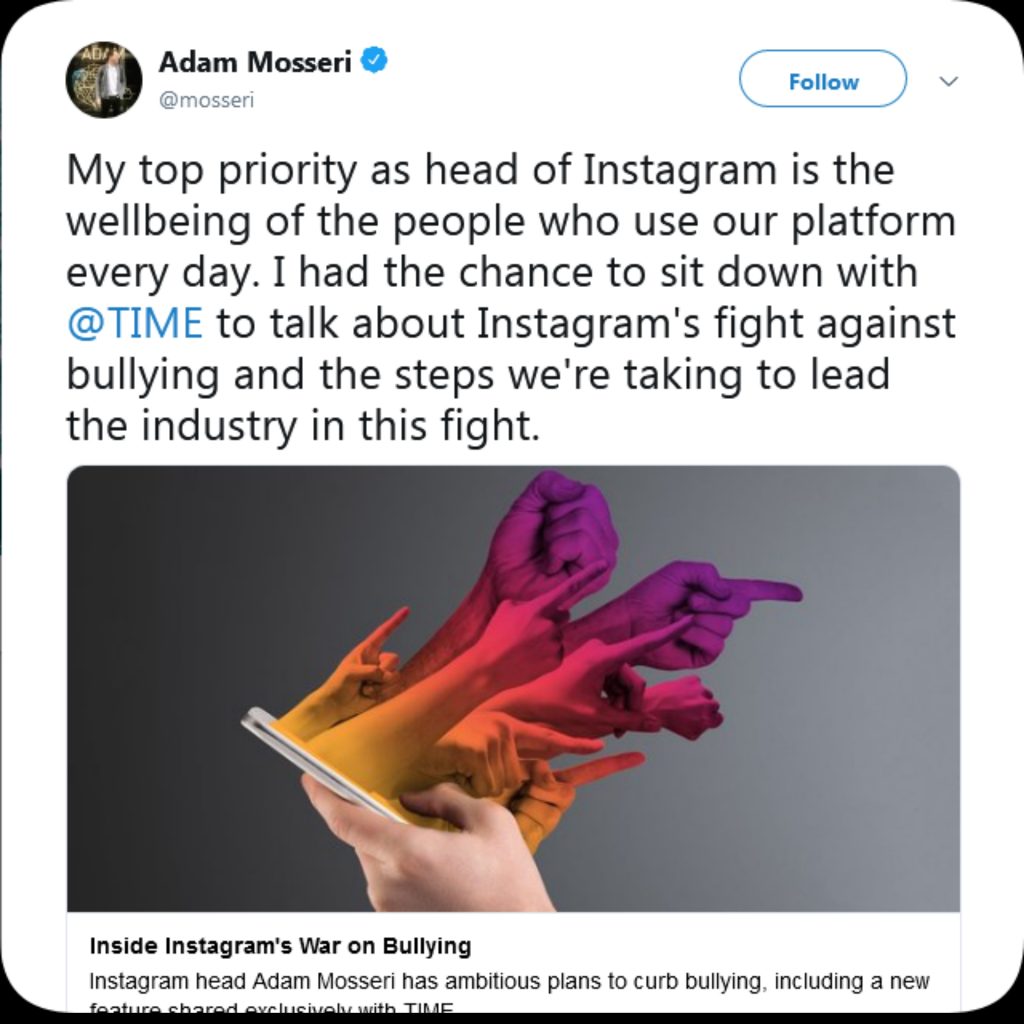
With that being said, Instagram must also be aware of freedom of speech as machines and tools are programmed with specific instructions and act how they are coded, so it should not bring about any update or tool that affects users right to speech.
“I do worry that if we’re not careful, we might overstep,” Mosseri says.
“We will make decisions that mean people use Instagram less,” he told TIME (during an interview), “if it keeps people safer.”
Instagram Extends its Efforts to Stop Bullying
From now on, Instagram is all set to roll out a feature that would notify Instagram users to take a pause and reconsider their words on the captions of their post.
Instagram took this initiative as a part of its efforts to make Instagram a safe and comfortable place for users to share their moments without triggering any emotions that could hurt other users on the platform.
Instagram quoted in one its blog post-“Earlier this year, we launched a feature that notifies people when their comments may be considered offensive before they’re posted. Results have been promising, and we’ve found that these types of nudges can encourage people to reconsider their words when given a chance.”
According to which, it means that when a user writes a caption on their feed posts that has potentially some offensive wordings or hateful connotation, Instagram would give them a prompt quoting that the wordings that they used in the caption is similar to what other users have reported for bullying.
Following which, Instagram would give them a options to “Edit Caption”, “Learn More”, and “Share Anyway”.
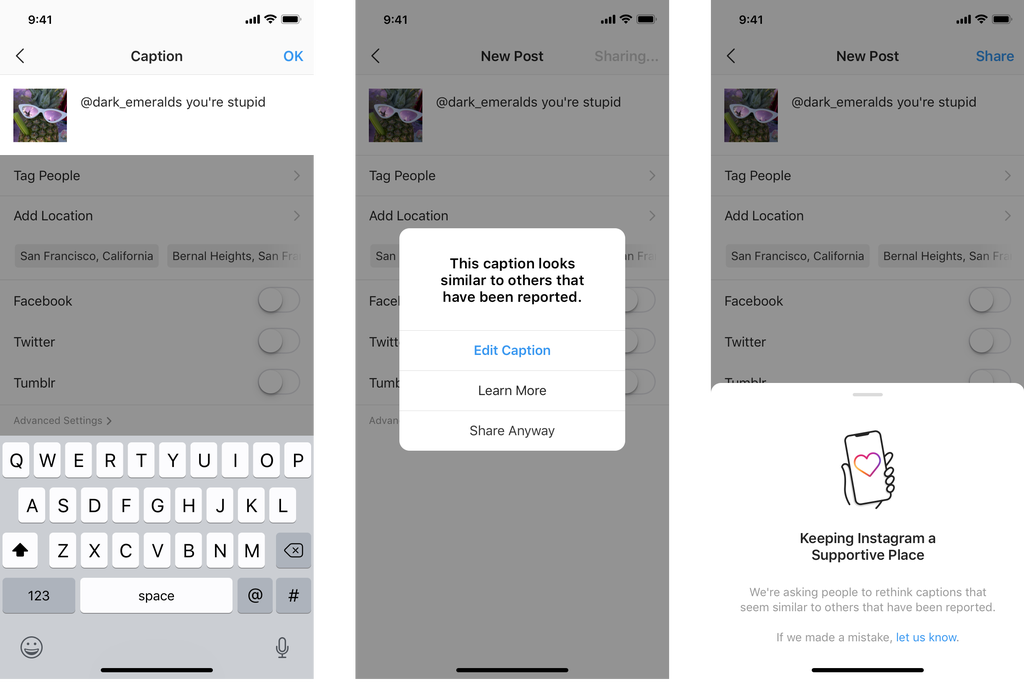
Users can edit their captions by choosing ‘Edit Caption’, or tap on ‘Share Anyway’ if they think Instagram has made a mistake.
The feature rolled as a result of limiting Instagram bullying that the platform has been always criticized about.
In addition, it helps users learn what Instagram would not bear on the platform, or when their account may be at the risk of breaking rules.
The feature is rolled out in selected countries for now; however, Instagram is thinking of expanding it globally in the coming months.
By the way, have you faced any such issues?
It’s never too late to report!
Lemme know in the comments section below if you ever faced cyberbullying, how you tackled it, or anything.
P.S- If you want to read more articles like this, please subscribe to our newsletter.
Until then?
See you next time!
Bye-bye.
